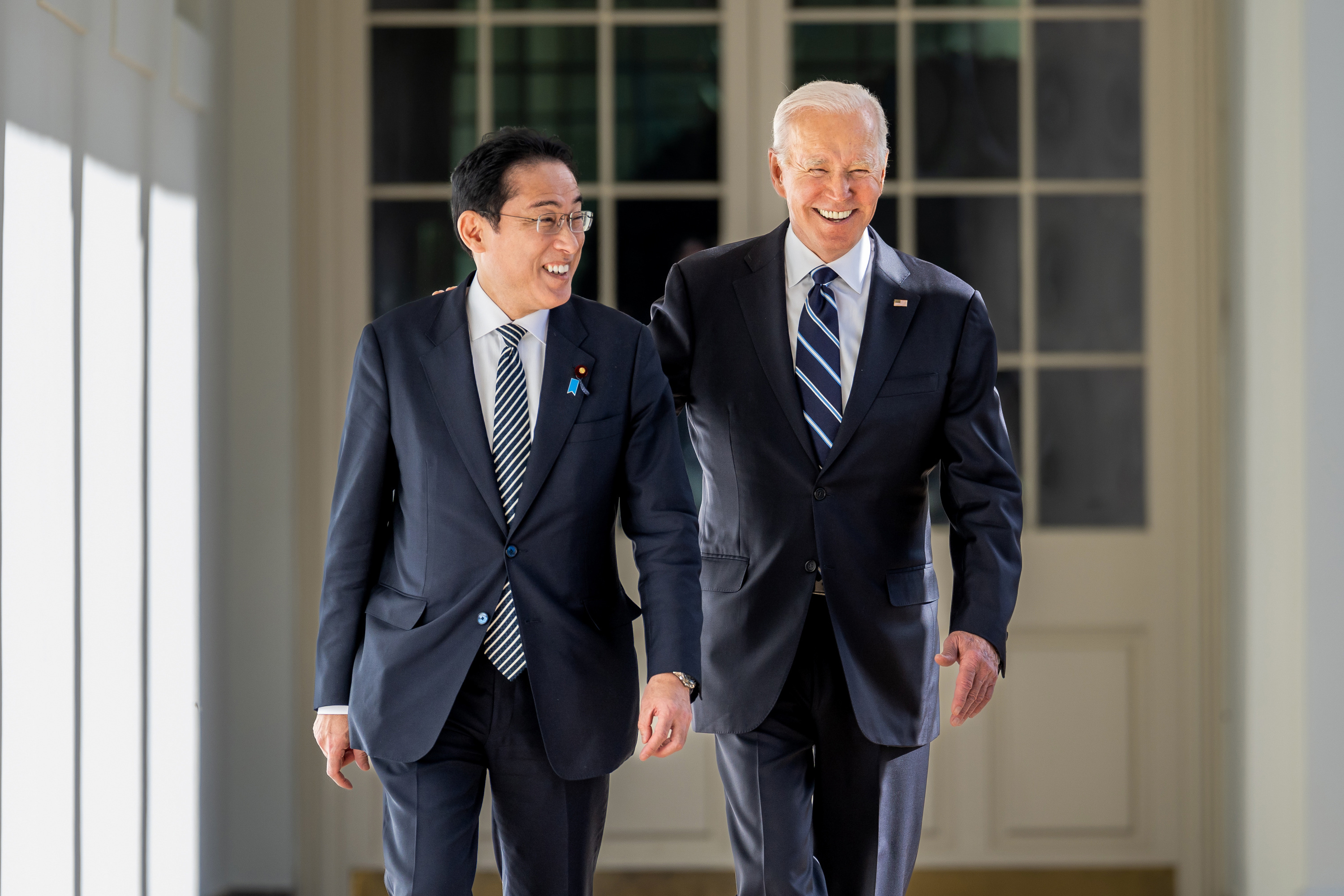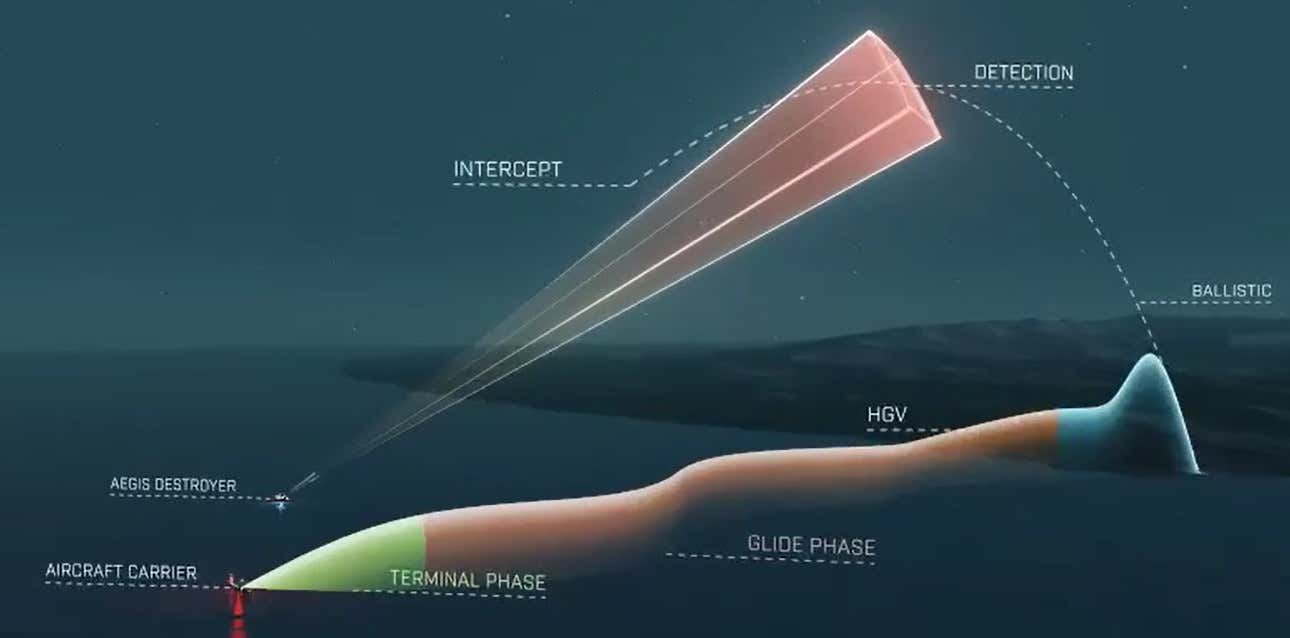Amid intensifying hypersonic missile threats from adversaries like China, Russia, and even North Korea, the United States and Japan plan to jointly develop a new type of missile that is capable of intercepting hypersonic weapons.
A US Missile Defense Agency official told Japan-based Kyodo News that Japan would contribute $1 billion for the Glide Phase Interceptor (GPI) project that the two countries hope to conclude by the 2030s.
President Joe Biden and Japanese Prime Minister Fumio Kishida decided on the joint development of the GPI project in August last year, ahead of a trilateral summit at Camp David with their South Korean counterparts. At that time, the officials said the interceptor would target weapons that evade existing ballistic missile defenses.
Unlike typical ballistic missiles, the hypersonic and glide vehicles travel at five times (or more) the speed of sound on an unpredictable trajectory. Compared to ballistic missile attacks, which can be defended with cutting-edge missile defense systems in the American inventory, hypersonic weapons are more challenging to shoot down or track since they are agile and capable of changing direction while in flight.
The announcement comes when traditional allies, the United States and Japan, strengthen their alliance and bolster their military cooperation to make it more robust in the face of burgeoning threats from China and Russia.

During Kishida’s state visit on April 10, Biden reaffirmed the United States’ “unwavering commitment…to the defense of Japan under Article V of the [Treaty of Mutual Cooperation and Security], using its full capabilities, including nuclear capabilities” in a joint statement and during a press conference at the White House. He clarified that his promise covered the Senkaku Islands, which China claims.
The need to develop an intercepting missile for hypersonic weapons comes when all three countries aggressively expand their hypersonic capabilities. While Russia has already used two of its three hypersonic weapons, namely the Zircon and the Kinzhal, China continues to field more advanced hypersonic weapons like the longer-range DF-27.
This is the second time Japan and the US have chosen to work jointly to create an interceptor missile after the two allies developed the Standard Missile-3 Block 2A, which has become a bedrock of defense against modern-day aerial threats.
The joint development of GPI is significant since Japan previously ditched the US and partnered with the United Kingdom and Italy to develop a next-generation aircraft under the Global Combat Air Program (GCAP). Given how Japan functions under the United States’ patronage and support, many experts found it unusual for Tokyo to join the GCAP.
On its part, the US is developing its next-generation combat platform, ‘Next Generation Air Dominance’ (NGAD), which does not include partners. It is believed that the Japanese side felt that the UK-led fighter program had similar objectives and was better aligned with Tokyo’s objectives.
As for the US, it likely did not invite Japan to the NGAD because it thought Japan would buy whatever the US created, as explained by EurAsian Times in a previous analysis. However, the two partners coming together to develop a major system to fight future challenges is noteworthy.
The Interceptor In The Making
Unlike a traditional defense system intended to intercept missiles just before they reach their targets, the new concept aims to bring down approaching hypersonic missiles during their most vulnerable glide phase of flight: before they re-enter the atmosphere from space.
A boost-glide weapon capable of reaching hypersonic speeds is fired into the sky, where it glides until it hits its target. The “glide” phase of the missile’s trajectory provides the best opportunity to intercept it before it enters its last high-speed drop. This is precisely what the Glide Phase Interceptor aims to do.
Often regarded as invincible, the threat from hypersonic weapons spring-boarded the MDA (the Missile Defense Agency of the United States government’s Department of Defense is responsible for developing a comprehensive defense against ballistic missiles) into intensifying efforts to develop a hypersonic interceptor since the continent and its overseas territories remain defenseless against highly maneuverable hypersonic weapons.

MDA Chief Vice Adm. Jon Hill previously explained: “So when you’re in the glide phase — higher up from the terminal, right, where a hypersonic vehicle is likely in its most vulnerable phase — that’s a pretty tough environment. And you can’t take an air defense weapon and operate it there, nor can you take a space weapon like an SM-3 and operate there; it’s just a different environment.”
Additionally, it broadly aligns with Japan’s attempts to build “counterstrike” capabilities, which include purchasing and developing a variety of missiles — including cruise, air-to-ground, land attack, hypersonic, and anti-ship — that can destroy missile bases owned by North Korea and China.
The nature of the missile and its configuration is not known. It is likely to be placed at the US bases in Guam and Japan, particularly the latter since Tokyo is legally bound to shoot down missiles and projectiles fired at the US mainland.
- Contact the author at sakshi.tiwari9555 (at) gmail.com
- Follow EurAsian Times on Google News





